The Bowers & Wilkins PI7 are impressive. Even if the price of just under 400 euros seems high at first, the first True Wireless in-ears from the long-established English manufacturer are worth the money. The sound raises the bar for their competitors and revises (my) prejudice that TWS earphones are not good enough for pure music enjoyment. What was also pleasing was the option of audio streaming via USB as well as mini-jack cable. So the PI7s offer wireless listening from the TV and can be used as playback devices for on-board systems on planes and trains, and even media creators could get used to incorporating True Wireless headphones into their work process thanks to the USB streaming function. A convincing debut in the true-wireless market!
Bowers & Wilkins like to take their time in the innovation race and do not always try to jump on the technology-driven bandwagon immediately. Better late and done properly was what I thought when B&W announced the first True Wireless in-ears in their range with the PI5 and PI7.
The more expensive PI7 model, which is the subject of this review, comes with high-resolution and fast Bluetooth audio codecs, adaptive noise cancelling and a hybrid driver model consisting of dynamic and balanced-armature drivers. The fact that the long-established British company also have a few surprises up their sleeves sets the PI7 apart from the competition.
Case study
Commonly, in-ears come with a storage/charging combo. Bowers & Wilkins, however, give their case an extremely practical additional function: you can either transmit audio streams to the earphones via USB or connect any analogue audio signal to the earphones. So this gives you a kind of audio interface in your pocket – with several advantages: for example, headphone outputs on the TV can be conveniently converted into a wireless headphone system. Or you can revive your good old stereo system with the PI7 and use it for wireless listening.
When working with audio or video on the computer, it is also a good idea to simply connect the charging case via USB-C and then designate it as the output device. The latency – i.e. delay – was so low that both watching videos and audio editing were possible without any problems. And – when travelling becomes possible again – the joy of adding the analogue connection option to an on-board system on a plane or train will also be great.
An attempt to use the PI7 as wireless piano headphones using the headphone output of the charging case did not really work well. The delay between playing and listening was a few milliseconds too great – but that’s not what the PI7s were built for, which is why we didn’t deduct a point.
Framework data
The Bowers & Wilkins PI7s do great things on paper: they can handle SBC, AAC, aptX Classic, aptX HD, aptX Low Latency and aptX Adaptive (but not LDAC), which means they can also handle high-resolution audio, which you can read about in the listening test below. The list of Bluetooth profiles also shows that these TWS headphones should be comfortable to use with all conceivable devices.
In addition to the streaming function, the charging case can also be charged wirelessly. Using the quick-charge function (15 minutes yields two hours of music enjoyment), even extreme battery drain is quickly cured, especially since the case can recharge the four-hour capacity of the two earpieces a maximum of four times.
The PI7s are equipped with one dynamic and one balanced-armature driver per side. For noise-cancelling, but also for the best possible intelligibility during audio and video calls, a total of six microphones, three per side, are built in.
Testing
The charging case with in-ears as well as some paperwork and two more earpieces in the same colour as the case make up the contents of the package.
The most important commands are quickly mastered via touch-sensitive outer surfaces. “Pause”, “Stop”, “Track forward”, “Track back” are now familiar operating steps that work well despite the miniature design. What is not possible via gesture control is changing the volume.
Pairing
The PI7s need to be in the case the first time they are connected with a playing device. When they are put back on, the connection is automatically established, and a preferred device can still be selected from the connection history in the app.
In our test, I connected the PI7 to Android, iOS and a MacBook via Bluetooth, which was generally reliable and quick.
The maximum Bluetooth range seemed to me to be somewhat shorter than usual with the Bowers & Wilkins PI7s. When paired with the computer, the first dropouts occurred halfway to the coffee machine (about nine metres). Nevertheless, I would like to mention their stable and, in everyday life, sufficiently far-reaching audio connection.
Noise cancelling and transparency
In-ears with noise-cancelling are no easy task for developers, but the PI7 has solved the problem brilliantly. The noise cancellation can be switched on and off via the app. Alternatively, a 1-second touch on the left earbud will do the trick. If you switch on “Auto” in the app, the noise-cancelling adapts to the acoustic environment, which is certainly a challenge with constantly changing events such as traffic noises since the sound also changes slightly due to the dynamic masking of the “outside”. As a rule, however, the PI7 do a very good job and allow the listener to listen in a relatively chilled out manner even in the presence of external commotion.
Another feature is the transparency mode, which can be vital, especially to a road user. Here, too, the PI7 can be adjusted quite finely and individually to one’s own needs via a slider in the app from “let little through” to “natural” and “amplified”. In my own tests, I liked to leave the noise reduction switched on outside, set it to “Auto” and the transparency mode to the middle position (i.e. “natural”).
The PI7 in everyday use
During my daily morning walks with the dog through town, country and forest, I mostly listened to podcasts or lighter fare like my favourite electronic playlist. Here, the PI7 performed confidently, and incoming calls could also be spontaneously accepted with a tap of the finger on the right side. Voice assistant commands could also be made without any problems with a short tap on the right after one or two practice sessions. The PI7s were relatively insensitive to wind noise and were comfortable to wear at all times. These earphones are also protected against splashing water (according to IP54), so that in a pinch, the “weather” has less of an impact on the headphones than on the person wearing them.
Something that was sometimes irritating: the app disconnected once or twice for unknown reasons and had to be paired again, but this could have many causes, e.g. an overcrowded Bluetooth list in the iPhone.
The PI7s could be intuitively removed from the case and placed in the ears. They continued to play at the last memorised point, which is very convenient, especially with podcasts.
I have already praised the streaming function via the charging case. I edited a small audio production using the Bowers & Wilkins PI7 wirelessly and without any problems. If you want to (and you have them), you can connect another pair of headphones from the Bowers & Wilkins family wirelessly to the streaming case. In our test, this worked without any problems with a PX7, but could only be paired after the PI7s were in the case. The p17s can be operated in parallel – that’s all there is to it.
The PI7s are not multipoint-compatible, and if I’m honest, I missed having this function once or twice. However, fast pairing worked quite reliably, so I’ll turn a blind eye to that criticism.
In terms of battery life, I can only report good things. Since the charging case is the best place to store them when not in use and the earphones are automatically recharged, I never got below 50% charge in everyday use. And since I also liked to have the case connected to the computer for audio streaming, it was always supplied with fresh power.
Listening to music
True wireless in-ears are above all practical and, as far as I can see, have been considered the second choice for pure music enjoyment – I like listening to my favourite music with open over-ears. This rather fixed attitude has shifted somewhat since using the PI7s. Apart from the purely physical advantages and disadvantages of over- and in-ears, I enjoyed retreating to the sofa for pleasurable music listening with the Bowers & Wilkins.
First of all: the ANC remained off, of course, even if the sound changes between the two operating states are rather marginal. Since the PI7s already sealed quite tightly in my ear canal, I set the transparency mode to “natural” when listening to music. Without noise or other sound influences, it was still not possible to miss the postwman ringing the doorbell.
In general, the PI7s exhibited a neutral reproduction. Basses were surprisingly defined and deep, mids and especially heavy metal guitars appear rounded rather than aggressive, and I found the highs to be clear and open.
I was extremely impressed by the bass reproduction. The remastered version of Kraftwerk’s “Vitamin” from 2009 offered a soft synthesiser line reaching into the low bass, which the PI7s were able to transmit in its entirety. With electronic tracks, in particular, the dynamic and balanced-armature drivers did an amazingly good job. Sometimes the precise and accurate reproduction was almost too much of a good thing for me: for example, the kick drum on “The Donut of the Heart” by J Dilla thumps almost too hard on the eardrums.
The ticking of the clocks in the intro of the Pink Floyd epic “Time” on “The Dark Side Of The Moon” was also too close to my auditory membrane for my liking. What distinguishes the Bowers & Wilkins PI7 is that they can use their reserves with Hi-Res audio signals and could also impress with high-quality classical recordings under the aptX-HD codec. Spatiality and richness of detail were impressive for an in-ear. Strings sounded soft in quiet passages and they were able to accentuate staccatos without coming to the fore. Even in recordings of large orchestras, it was possible to locate the individual instruments well and to enjoy immersing oneself in the sound.
Technical specifications
- Ear couplingIn-ear
- Typeclosed
- Transducer principledynamic + balanced-armature driver
- Frequency response (headphones)10 - 20.000 Hz
- Weight without cable7 g each, Case 61 g
- Cable length20 cm
What's in the box
- 3 pairs of ear tips (S, M, L)
- 20 cm USB-C to 3.5mm audio cable
- 20 cm USB-C to USB-C charging cable
Special features
- Available in anthracite and white
- BT codecs: SBC, AAC, aptX Classic, aptX HD, aptX Low Latency, aptX Adaptive
- BT version: 5.0
- BT profiles: A2DPv1.3.1, AVRCPv1.6.1, HFPv1.7.1, HSPv1.2, BLE GATT


















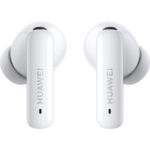

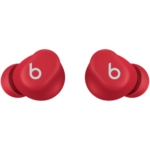

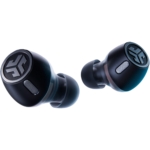

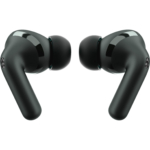







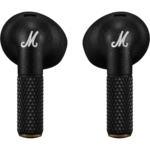

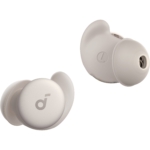

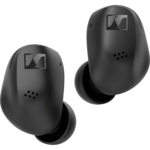

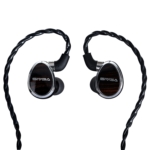




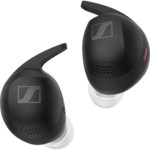








hello,
I have a network streamer RS Rose 150B.The streamer has all kind of inputs and outputs as well as preamp but doesnt have a headphone output.
The streamer is connected to external McIntosh preamp. Where should I connect the PI7 case to listen with the headphones
regards
If you have the BT WiFi Dongle for your RS Rose 150B you can connect the PI7 directly. Otherwise you would need a bluetooth transmitter box. But make sure you choose one with the current Bluetooth codecs.